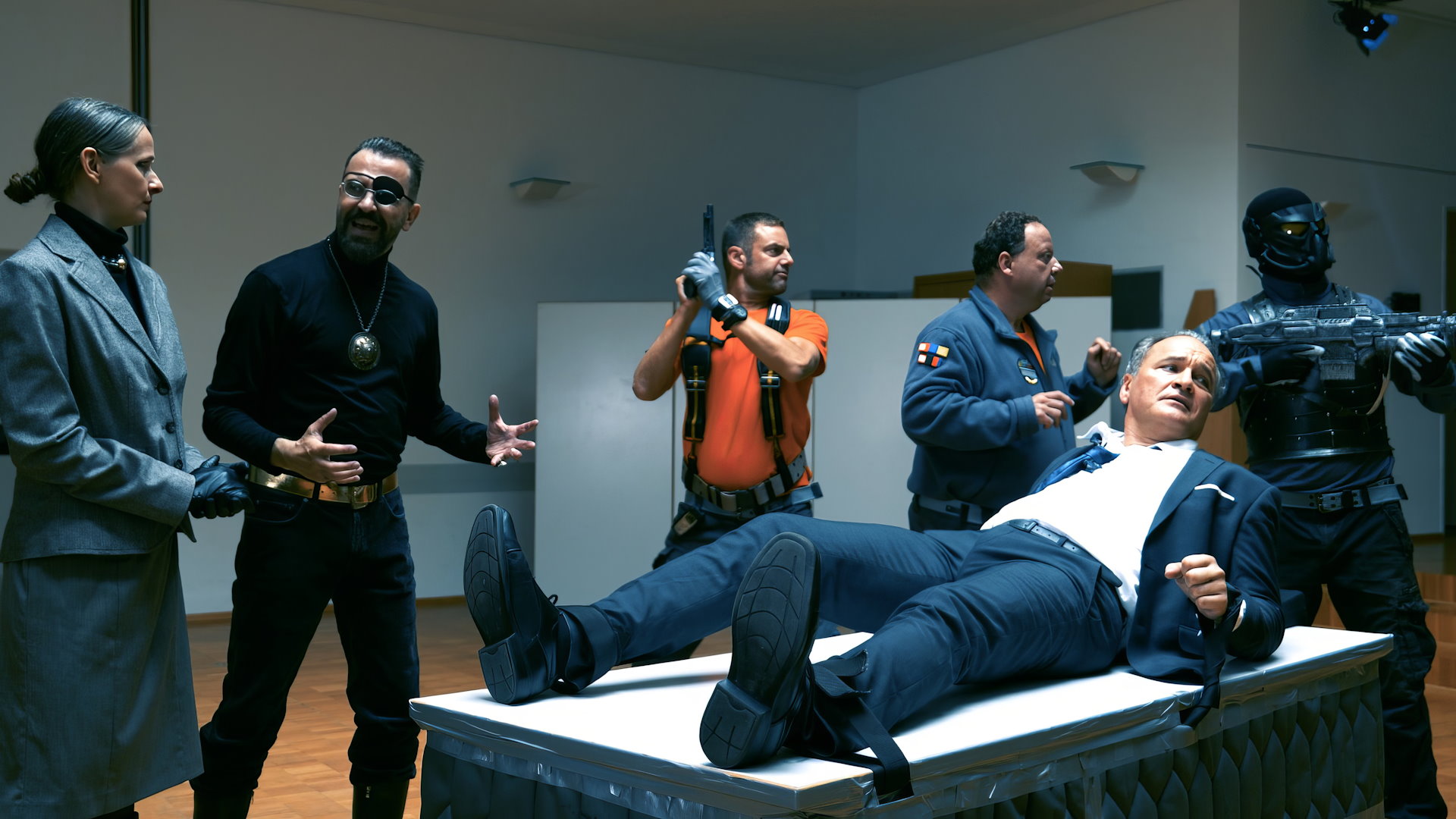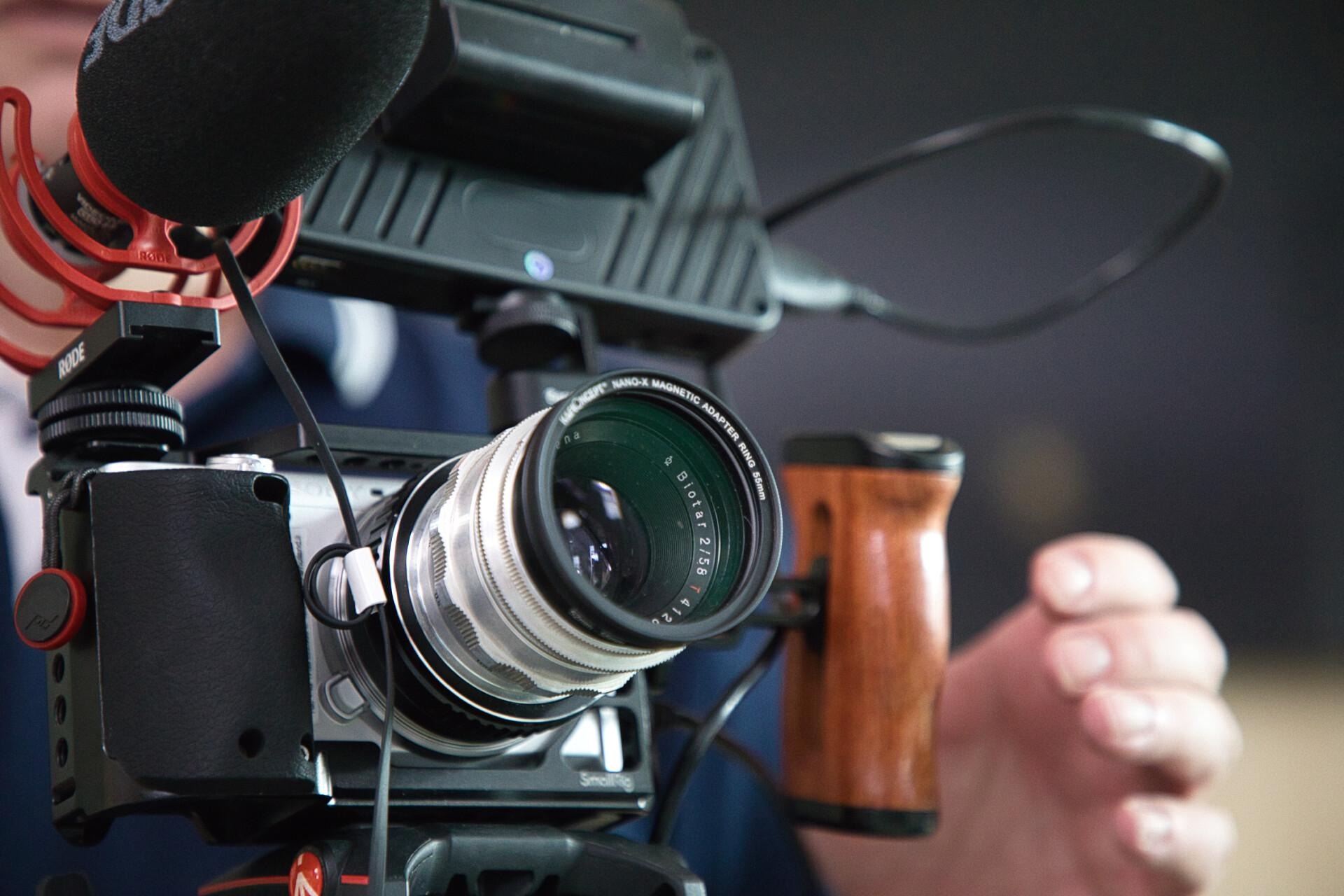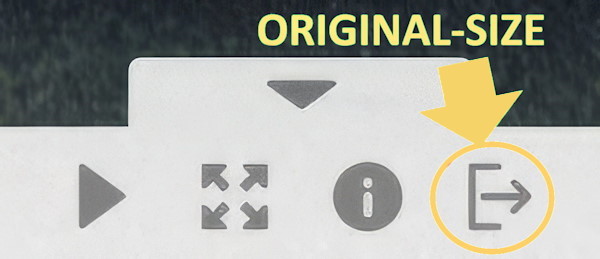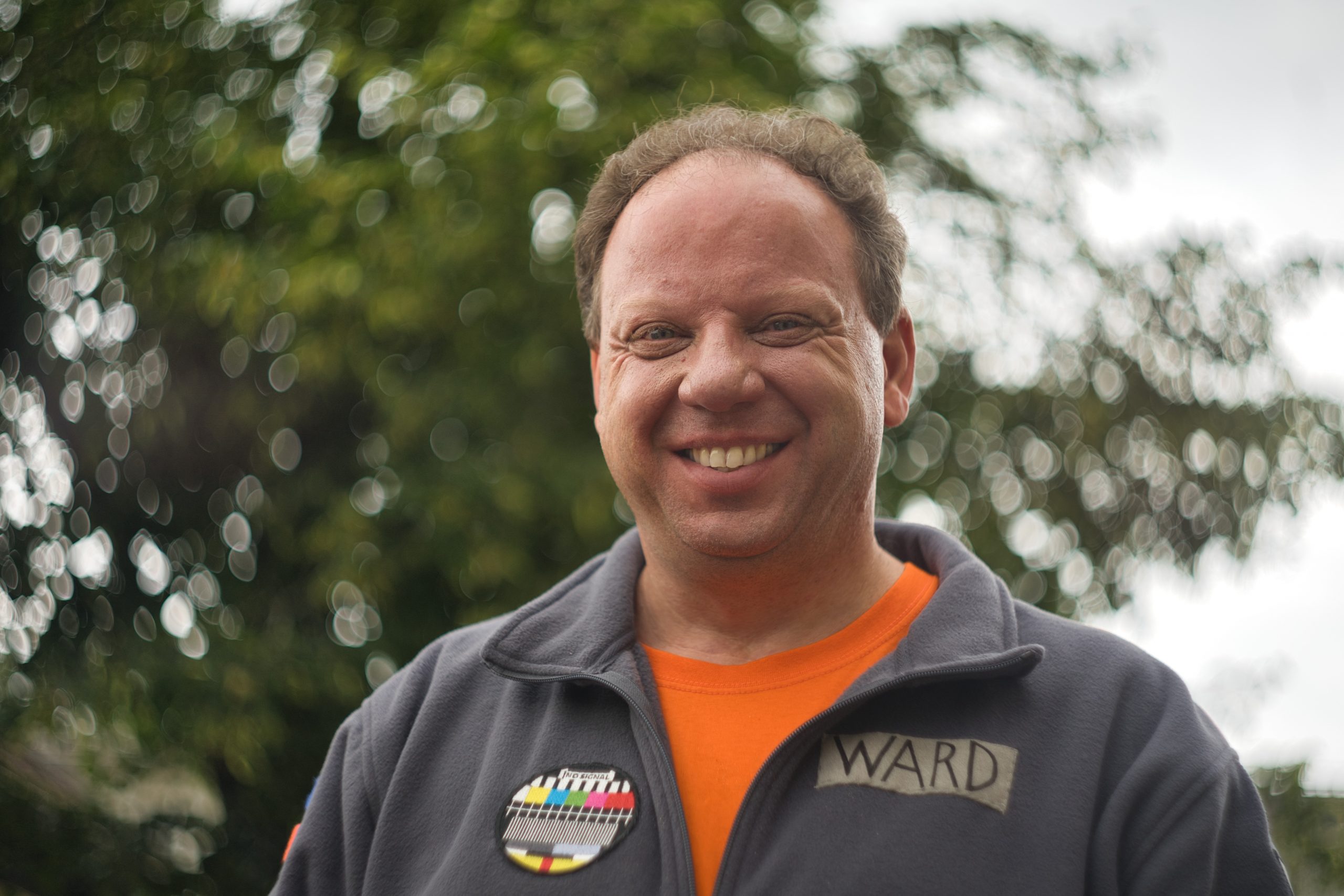Click on the image to watch the teaser for our indie short film ‘VENDING MACHINE REPAIRMEN’
Abstract of this article: I’ll elaborate on our decision to employ a 70-year-old Zeiss Biotar lens for capturing stunning 4K close-ups during the production of our independent short film in 2023. Interestingly, this lens is nearly identical to the Russian copy lens utilized for filming the car scenes in the 2022 blockbuster ‘The Batman’, aptly named the ‘BATGLASS’ lens.
Exclusive Interview with the Producer of the Indie Film

Klick on image to enlarge …
Below is an exclusive interview with producer and co-director Christian Eberle.
Chris: When will the short film VENDING MACHINE REPAIRMEN be officially released?
Christian: Hopefully in December this year, 2023.
Chris: How did this German indie short film production come about?
Christian: I was looking for a doable concept and was inspired on my last vacation in Helsinki where I saw those many scruffy Vending Machines in subway stations. I combined this with an earlier idea of mine about two guys flying around in an old Dornier DO-31 airplane.
Chris: What makes it different to other indie short films?
Christian: We are shooting partly on retro-lenses and I want to use classic film VFX like matte paintings and miniatures. Of course we also have a few greenscreen-shots, but mostly due to budget reasons. Building sets is expensive. And this production is VERY low budget.
Question: What was the biggest challenge creating this short film?
Christian: Getting it done.
Chris: Were there any lessons learnt in the making of this short film?
Christian: There’s new lessons every time. This is my third short film project that I wrote, produced and co-directed.
Chris: Are you looking for a crowdfunding campaign to produce a longer sequel to this short film?
Christian: Possibly. Filmmaking is still expensive, even in the age of fairly affordable technology. And we try to do a lot of interesting miniature shots and VFX.
Chris: What is your next project?
Christian: Hopefully more episodes of VENDING MACHINE REPAIRMEN. But I always have ideas and I like writing scripts.
Capturing 4K Close-Up Footage: Utilizing the Zeiss Biotar 58mm f2 Classic Lens on a Sony APS-C Camera

The Zeiss Biotar 58mm f2 lens, when used with an APS-C sensor, yielded a nearly identical angle of view to that of an 85mm portrait lens on a full-frame camera, thanks to its 1.5x crop factor.
The Zeiss Biotar 58mm f2 classic lens truly shone in close-up shots, delivering exceptional and distinctive bokeh characteristics. The renowned swirly bokeh of the Zeiss Biotar lens becomes especially pronounced when there are highlights in the background.
Behind-the-Scenes: The Film Crew
Nearly all the photographs captured by the film crew were taken using the 1953 Biotar 58mm f2 classic lens mounted on a Sony a7II full-frame camera.
When you click on an image in the galleries, following buttons will allow you to select some features. Use Original-size to watch the photo in full resolution:

Slideshow | Fullscreen | Image-Info | Original-size
Why did we do the close-up shots with the original Zeiss version of “The Helios-44 BATGLASS”?
The Helios-44 is a replica of the Carl Zeiss Jena Biotar 58mm f2 lens. In its early days, it was even known as the ‘БиоТар Красногорский’ (BioTar Krasnogorski). Towards the end of World War II, the Russians acquired Zeiss’ designs and raw materials and proceeded to replicate the lens in Russia. The Soviet Union mass-produced millions of variations of this lens, which became the standard lens for many Soviet cameras. It has since gained a prominent reputation as the top classic lens for shooting videos on modern cameras, renowned for its distinct image character, exceptional center sharpness, clickless aperture, and signature swirly bokeh.
The Helios-44 58mm f2 lens, also known as “The BATGLASS”, found application in capturing the car scenes featured in the 2022 film “The Batman.
I’ve conducted thorough comparisons between the Biotar 58mm f2 and Helios-44M4 lenses, including pixel-level analysis, and in my assessment, the visual aesthetic and image quality are virtually indistinguishable. Nevertheless, there’s an unmistakable satisfaction in shooting with the original Zeiss Biotar lens, especially in a rare special edition boasting Q1 top-tier quality and the coveted red-T coating.
To grasp the fascinating qualities of the Zeiss Biotar 58mm f2 lens and its Russian counterpart, the Helios-44, in the realm of cinematography, be sure to tune into Mark Holtze’s insightful video:
Creating Swirly Bokeh with Zeiss Biotar or Helios 44 Lens

Behind-the-Scenes: Film Set Photos
Summary
Here are the valuable insights I gained from this film project:
- Key elements for success in indie filmmaking are talented actors, impeccable sound quality, and expert lighting. A special thanks to Wolfgang Hawel for his outstanding contributions in ensuring perfect sound and lighting.
- In my future video shoots, I plan to start using 10bit S-log3 to harness the power of post-production color grading.
- Additionally, I’m excited about the prospect of incorporating other renowned classic Zeiss lenses into our upcoming projects. Lenses like the Contax 28mm f2 ‘Hollywood’, the Contax 28-85mm known for its cinematic aesthetics (as seen in Steven Tanno’s video example), and the Flektogon 35mm f2.8 for stunning macro shots of miniatures all deserve a place in our creative toolkit.
- Admittedly, using a small, 70-year-old classic lens posed its challenges, especially when manually focusing for each shot. To enhance precision in our future endeavors, I plan to invest in Focus Follows Gear equipment. Stay tuned for more exciting developments in our filmmaking journey.
Many thanks to Werner for sharing his excellent and authentic photos from the film set!
If you wish to reach out to me directly, please send an email to ch@swiss-1.ch. Otherwise, feel free to leave a comment below.
Explore Further
Swirly Bokeh? The legendary Zeiss Biotar 58mm f2 vs. the Russian copy Helios 44M-4 58mm f2 lens
Nice Biotar close-up video, I’m using the Russian lens Helios 44M4 for my indie films
Awesome! And thanks so much to all the cast and crew for a great shooting day.